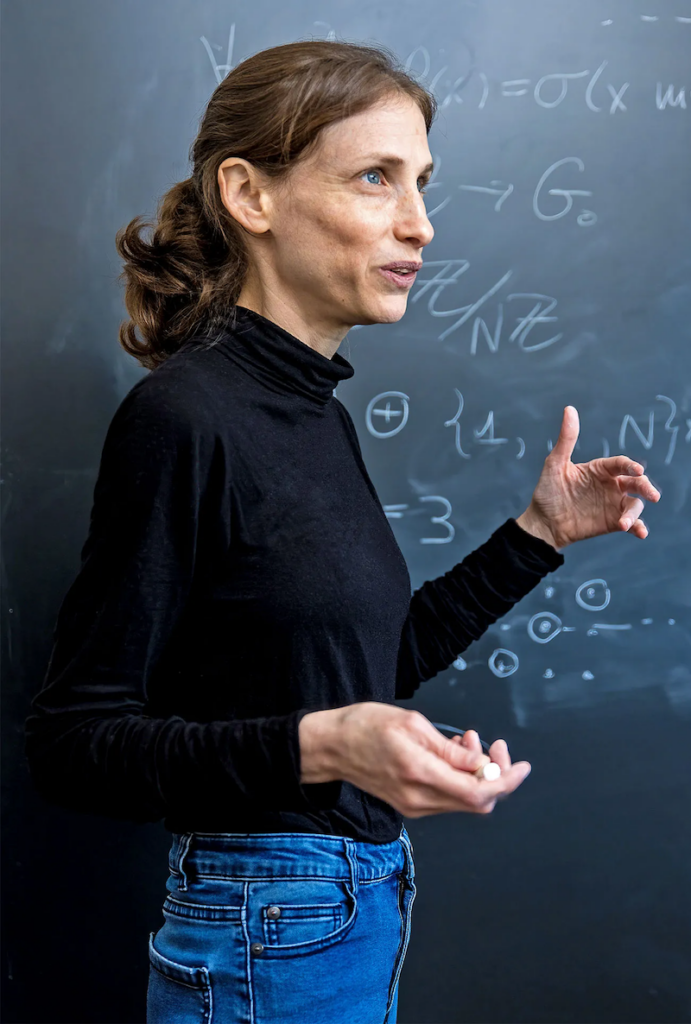Here’s a roundup of the maths news we missed in December 2022.
Maths News
The leap second, referred to in this Independent article as a ‘devastating time quirk’, is finally being abolished. This has been covered in a bunch of places, mostly being quite rude about the leap second, including a writeup in the New York Times where it’s referred to as ‘a kludge, a bain, a pain in the little hand’ (£), and this Live Science article (‘pesky’). A committee at the International Bureau of Weights and Measures apparently nearly unanimously voted in support of Resolution D, meaning there won’t be any leap seconds from 2035 until at least 2135.
Anti-maths news! Princeton mathematician Rachel Greenfield (pictured left – photo by Dan Komoda/Institute for Advanced Study), working with Fields Medalist Terry Tao, has posted a disproof of the periodic tiling conjecture. A preprint titled ‘A counterexample to the periodic tiling conjecture‘ is now on the ArXiv, and if it’s correct, means that any finite subset of a lattice which tiles that lattice by translations, must tile it periodically. There’s a nice explanation in the Quanta writeup!
Meanwhile there’s been a new claimed proof of the 4-colour theorem, which is non-constructive (meaning it doesn’t rely on finding a colouring for every possible map, but proves the theorem generally). Some people have been skeptical about the proof, including in this statement from Noam Zeilberger, which links to a Mastodon discussion with John Carlos Baez. (via Neil Calkin on Mastodon)
Another claimed proof – this time of the sunflower conjecture. A k-sunflower is a family of k different sets with common pair-wise intersections, and the conjecture gives conditions for when such a thing must exist.
ArXiv has posted a framework for improving the accessibility of research papers on arXiv.org – their plan is to offer html as well as PDF versions of papers. (via Deyan Ginev)
Events

Bright-trouser-wearer and mathematician Marcus Du Sautoy is offering a free OU online course, entitled ‘What we cannot know’. Find out how he manages to break the rules of reality by facilitating you knowing something that it’s by definition impossible to know, by signing up online for the 8-week course (which can also be accessed without signing in but then you don’t get a badge).
As part of their Elevating Mathematics video competition, the National Academies Board on Mathematical Sciences and Analytics (BMSA) invites early career professionals and students who use maths in their work to submit short video elevator speeches describing how their work in mathematics is important and relevant to our everyday lives, with a $1000 Prize for the best video.
And finally, in a rare instance of us linking to the Hollywood Reporter, Hannah Fry is to front a science and tech series for Bloomberg, entitled The Future With Hannah Fry. Sounds great! It’ll be available on Bloomberg’s Quicktake streaming service and will explore breakthroughs in artificial intelligence, crypto (not clear if -graphy or -currency), climate, chemistry and ethics.

